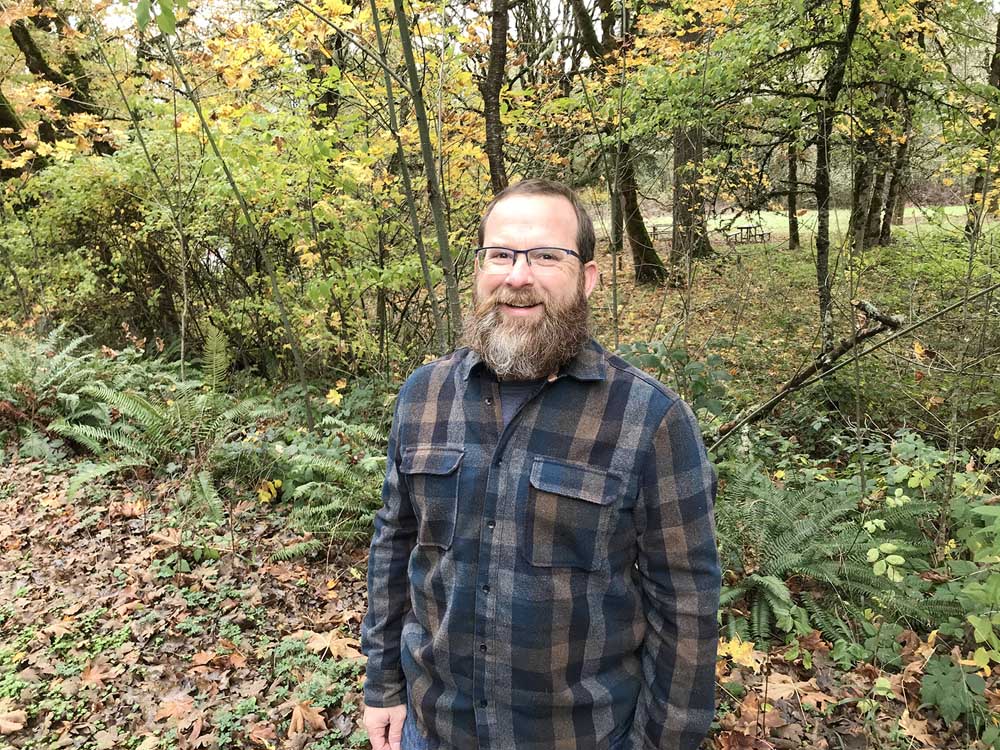Online Auction – Corbett Estate Auction
Corbett Estate Auction Date(s) 4/14/2025 - 4/30/2025 Bidding Opens April 14th at 5pm (pst) Bidding Starts to Close April 30th at 5pm (pst) OFFSITE AUCTION - All items located in […]
Published 10:00 am Friday, November 13, 2020

As an ex-firefighter, Chris Dunn knows withdrawing from advancing flames is discouraging — but as a fire science researcher, he understands such retreats can be strategic.
By instinct and tradition, forestland firefighters try to keep blazes as small as possible, so backing off may seem counterintuitive, he said.
“It’s hard to make that leap. You want to do everything you can,” Dunn said.
Under specific circumstances, though, it’s better to cede some ground to re-position firefighters, back-burn suitable acreage and create fuel breaks so the wildfire is more quickly and effectively contained, he said.
In his job as a research associate at Oregon State University’s College of Forestry, Dunn analyzes landscape features on a large scale and develops risk management plans to help firefighters succeed when fires erupt.
His work, which is funded by the U.S. Forest Service, aims to identify inefficiencies in fire management and how to use resources more productively.
Dunn assesses the probability of wildfires occurring and how they might impact communities, timber production, wildlife habitat, recreation values, and infrastructure such as roads and power lines, among other factors.
The next step is to “operationalize” that data to focus firefighting efforts and forest treatments where they’re most useful at mitigating high-risk fires.
“It’s a re-envisioning of how we deal with fire,” Dunn said. “It’s a radical re-envisioning of the reality we’re dealing with.”
Instead of just being aggressive, firefighters can look at the forested terrain as a battlefield and then situate themselves where they’re most assured to defend containment lines.
In some cases, that may involve “pushing” fires toward areas where they pose a lower risk.
Not only does this approach preserve firefighting resources, but allowing fires to spread under the right conditions can actually have beneficial ecological results, Dunn said.
Reducing the density of overstocked forest stands decreases fuels and potential fire severity. Fires can also create openings for sun exposure and “early seral habit” that’s valuable for many species.
Dunn’s research is offered to firefighting agencies, which use the “risk-based analytics” as they see fit, he said.
The goal is to provide a tool rather than press a philosophy, helping them to decide how fire should be managed across jurisdictions.
“We’re playing the long game,” Dunn said. “They need to work together to be most effective. They need to be aligned.”
The information is also presented to local collaborative forums — which generally consist of community leaders, business owners, timber interests and environmental groups — to inform their planning process for forest treatment projects.
“When you get everybody there, they can all see it,” he said. “That then allows them to design projects to support firefighters.”
Dunn said it’s likely his experience in both the academic and firefighting spheres convinced the Forest Service to recruit him to its Wildfire Risk Management Science Team. He could bridge the gap between those two realms.
Though Dunn was initially geared toward biology and pre-med in college, he “realized that wasn’t my passion” and shifted his attention to forestry — specifically, fire science and spatial information management systems.
With satellite imagery and other remote sensing technology, researchers can study how fire affects forests over time as well as how landscapes affect wildfire behavior on a broad scale, he said. “You can cover big space, that’s the point.”
After graduating from Colorado State University, Dunn moved to Oregon and put his knowledge to use as a crew boss for private and federal firefighting entities. He was drawn to the field as a “grand adventure.”
“Fire and forestry are not all that separable,” he said. “We all seem to have an innate pull to fire.”
After about seven years of firefighting, though, Dunn saw this career path was taking a toll on his relationships and other interests. Being constantly on-call during fire season was strenuous and time-consuming.
“I was tired of being a ground-pounder. Running crews, basically,” he said.
Dunn went back to school for his master’s degree in forest resources from Oregon State University, where he studied the wildfire implications of salvage logging and the role of post-fire fuels.
Though his original intention was to advance to a management position in the firefighting field, that plan was “derailed” as he became more embedded in academia.
For his doctorate, Dunn examined how forests naturally recovered from wildfires without human manipulation, examining the implications for public lands management.
Once his studies were complete, Dunn remained at OSU as a research associate, where passion for forestry and data science now steer on-the-ground decision-making.
“It’s a lot more fun to work with the natural world than just the human world,” he said. “Or better yet, the interface of the human world and the natural world, where I reside.”
Occupation: Research associate at Oregon State University, member of the U.S. Forest Service’s Wildfire Risk Management Science Team
Age: 45
Education: Bachelor’s degree in forest management from Colorado State University in 1999, master’s degree in forest resources from Oregon State University in 2010 and Ph.D. in forest resources from OSU in 2015
Hometown: Philomath, Ore.
Family: Wife, Kara, and two young twin boys